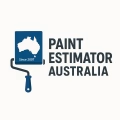Welcome to our comprehensive guide on internal door painting costs for homeowners and painting contractors in Australia. Whether you’re a homeowner seeking to refresh your home’s interior or a professional in the aircraft hangar and aviation painting industry in Barrack Point, this article will provide you with valuable insights on room-by-room door painting costs.
Section 1: Estimating Paint Coverage
To accurately estimate the costs of internal door painting, it’s essential to understand the paint coverage required. Here are factors influencing paint coverage:
- 1. Door material (e.g., wood, MDF, melamine, glass)
- 2. Pre-existing paint finish (e.g., gloss, semi-gloss, matte)
- 3. Number of coats required (e.g., primer, base coat, topcoat)
- 4. Door size and complexity (e.g., paneling, moulding, hardware)
Section 2: Vehicle and Fuel Operating Costs
When calculating the costs of internal door painting, it’s crucial to consider vehicle and fuel operating costs for transportation to and from job sites. Factors impacting these costs include:
- 1. Distance to job sites
- 2. Frequency of travel
- 3. Vehicle type (e.g., car, van, truck)
- 4. Fuel prices
Section 3: Labor Costs
Labor costs are a significant factor in door painting projects. These costs depend on the following factors:
- 1. Painter’s experience and skill level
- 2. Project complexity (e.g., multiple doors, various rooms)
- 3. Time required for each door
- 4. Number of painters involved
Section 4: Paint Costs
Selecting the right paint is essential for achieving the desired finish and longevity of your doors. Factors affecting paint costs include:
- 1. Paint quality (e.g., budget, mid-range, premium)
- 2. Paint quantity needed
- 3. Paint type (e.g., water-based, oil-based, latex)
Section 5: Materials and Equipment Costs
Beyond paint, other materials and equipment may be required for internal door painting projects. These costs depend on factors such as:
- 1. Brushes, rollers, and trays
- 2. Sandpaper and other sanding materials
- 3. Primer, filler, and sealant
- 4. Tape, drop cloths, and other protective materials
Section 6: Time and Overhead Costs
In addition to the above costs, it’s essential to factor in time and overhead costs. These costs may include:
- 1. Project management
- 2. Administrative tasks
- 3. Marketing and advertising
- 4. Insurance and licensing fees
FAQs
Q: How long does it take to paint an internal door?

A: The time required to paint an internal door depends on factors such as the door’s size, complexity, and the number of coats applied. On average, a single door can be painted in 2-4 hours.
Q: What is the best paint for internal doors?
A: The best paint for internal doors depends on factors such as the door’s material, desired finish, and durability requirements. Generally, water-based paints are recommended for their ease of application, quick drying time, and low odour.
Q: Should I hire a professional painter or do it myself?
A: Hiring a professional painter is recommended for ensuring a high-quality finish, saving time, and avoiding potential mistakes. However, if you have the necessary skills, equipment, and time, painting internal doors yourself may be a cost-effective option.
Key Information
| Factor | Description |
| ——– | ——————————————————————————————————————————————————————- |
|---|---|
| Pre-existing Finish | The current finish of the door (e.g., gloss, semi-gloss, matte) |
| Number of Coats | The number of coats required for the door (e.g., primer, base coat, topcoat) |
| Door Size & Complexity | The size and complexity of the door, including paneling, moulding, and hardware |
| Distance to Job Sites | The distance between your business location and the job sites |
| Vehicle Type | The type of vehicle used for transportation (e.g., car, van, truck) |
| Fuel Prices | The current prices of fuel |
| Labor | The cost of the painter’s time and skill |
| Paint | The cost of the paint and related materials (e.g., brushes, rollers) |
| Materials & Equipment | The cost of additional materials and equipment (e.g., sandpaper, tape, drop cloths) |
| Time & Overhead | The cost of project management, administrative tasks, marketing, and overheads |
| Door Material | The type of material used for the door (e.g., wood, MDF, melamine, glass) | | Pre-existing Finish | The current finish of the door (e.g., gloss, semi-gloss, matte) | | Number of Coats | The number of coats required for the door (e.g., primer, base coat, topcoat) | | Door Size & Complexity | The size and complexity of the door, including paneling, moulding, and hardware | | Distance to Job Sites | The distance between your business location and the job sites | | Vehicle Type | The type of vehicle used for transportation (e.g., car, van, truck) | | Fuel Prices | The current prices of fuel | | Labor | The cost of the painter’s time and skill | | Paint | The cost of the paint and related materials (e.g., brushes, rollers) | | Materials & Equipment | The cost of additional materials and equipment (e.g., sandpaper, tape, drop cloths) | | Time & Overhead | The cost of project management, administrative tasks, marketing, and overheads |
A successful internal door painting project requires careful consideration of various factors, including paint coverage, vehicle and fuel operating costs, labor, paint, materials and equipment, and time and overhead costs. By understanding these factors, homeowners and painting contractors in Australia can make informed decisions and achieve their desired results.
Looking for a reliable painting contractor in Barrack Point? Contact us today to discuss your internal door painting needs and receive a customised estimate.
These articles are drafted with AI assistance and should be considered general information not professional advice or information Learn More


